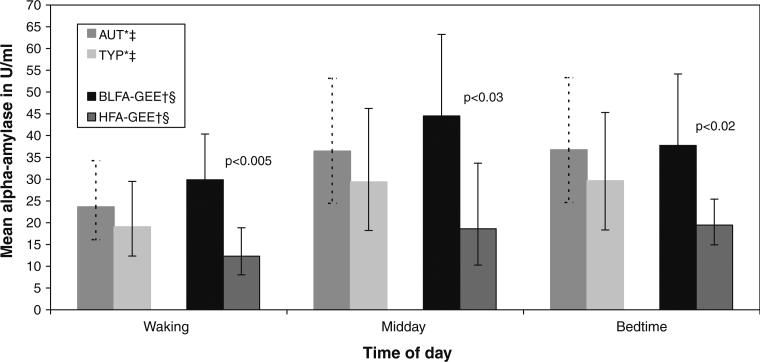Fig. 2.
Mean (95 % confidence intervals) salivary alpha-amylase levels in children by diagnosis*‡ and by functional status†§. *Marginal estimate obtained from causal modeling with g-computation estimation; 95 % confidence interval obtained from bootstrapping with repeated sampling †Least squares mean and 95 % confidence interval obtained from generalized estimating equation (GEE). We could not obtain CIs around the g-computation estimates from bootstrapping. The CIs around the g-computation estimates would be more conservative and preferred because they are the correct estimates. ‡Diagnosis: AUT = children with autism (N = 26); TYP = typically developing children (N = 26); adjusted for time (dummy), child's age (continuous), CBCL total score2 (continuous), phase (ordinal), and mother works (dichotomous) §Functional status: BLFA = both low functioning children with autism (N = 21); HFA = high functioning children with autism (N = 5); adjusted for time (dummy), child's age (continuous), CBCL total score squared (continuous), and phase (ordinal)

